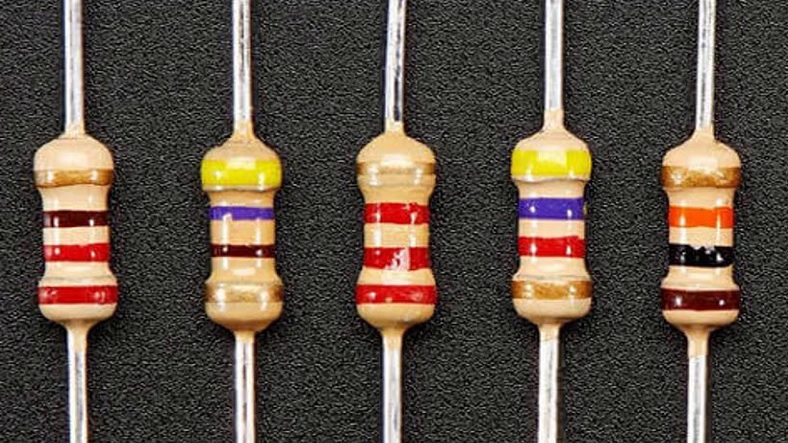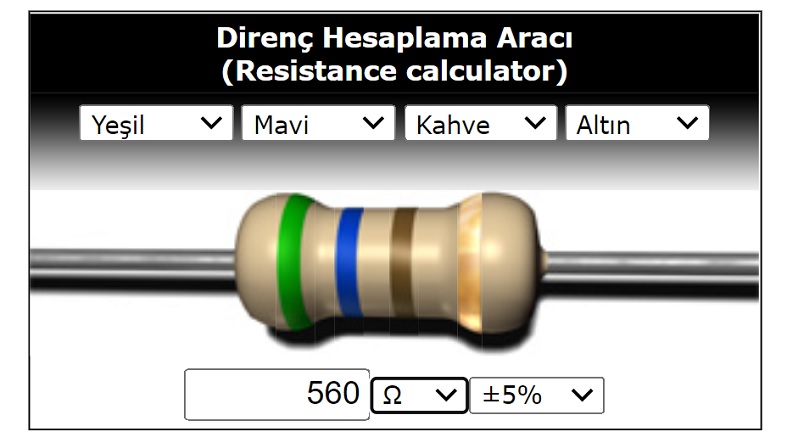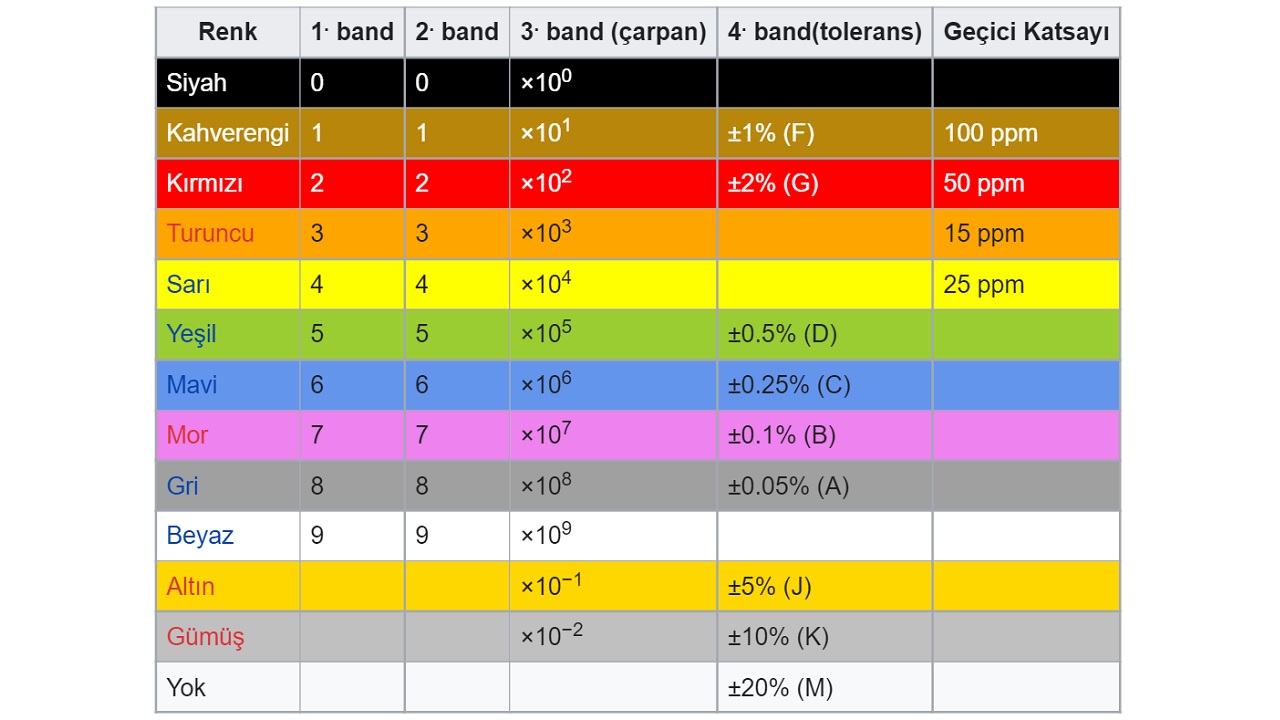In electrical systems, an interface element called a resistor is used to provide current control, and colored tapes are attached to the unit to show the value of this resistance. Here, these colored bands on the resistor are the resistor color codes. So how is it calculated? Let’s examine it in details.
Electrical systems are extremely complex structures. In order not to damage the devices, direct current must be passed at all times, and many interfaces are used for this. One of these interfaces is the resistor. In its broadest definition, resistance controls electric current. Of course, this unit has a separate resistance value depending on which system it is used in. This value is shown with resistor color codes.
Because the resistance value has an extremely wide range, number of resistor color codes it is just as much. Professionals now understand what this value is as soon as they see the color, but if you are a beginner, resistor color codes can be extremely confusing. Fortunately, there are some tools you can use for the calculation process. Bride What are resistor color codes, how to calculate Let’s see all the details.
What is electrical resistance?
Electrical resistance refers to the force that the electrical system exerts against current. Also in the system The interface name used for this purpose is also the resistor. The unit of resistance is the ohm, and it is denoted by the omega symbol Ω for short. The resistor value can be millions of ohms. The resistor value is indicated by the resistor codes.
What are resistor color codes?

The value of the resistor interface used to control the current in the electrical system is shown. The colors on the bands are the resistor color codes. Resistor color codes; It consists of black, brown, orange, yellow, green, blue, purple, gray, white, gold and silver colors. Resistor color codes are displayed on systems consisting of 3, 4, 5 and 6 bands.
Resistor color codes are internationally accepted It has been determined according to the IEC 60062 standard. In addition to standard band systems, another band can be found in military systems to show reliability. The single black band indicates 0 ohms. The 4th band of the old 5-band resistors may have a silver or gold color. Yellow and gray colors can be used instead of gold and silver in high-voltage resistors.
Resistance color codes according to the number of bands:

- In the 3-color band, two bands show the resistance value, while one band acts as a multiplier.
- In the 4-color band, two bands show the resistance value, one band is the multiplier, one band shows the tolerance value.
- In 5 colored bands, three bands show the resistance value, one band is the multiplier, one band shows the tolerance value.
- In 6 colored bands, three bands show the resistance value, one band is the multiplier, one band shows the tolerance value, one band shows the temperature coefficient.
How are resistor color codes calculated?
- Step #1: Open the resistor color code calculator via the link here.
- Step #2: Choose the color of the bands in order.
- Step #3: Select the ohm display value.
- Step #4: Select the margin of error of the value.
- Step #5: If there are more than four bands on the resistor, open the resistor color code calculator here.
- Step #6: Choose the number of bands.
- Step #7: Choose the color of the bands in order.
- Step #8: Select the ohm display value.
- Step #9: Select the margin of error of the value.
- Step #10: The operation is complete.

You can use the tools in the steps to calculate the resistor color code. Since the ohm value can increase with the strength of the resistor Choosing the impression value is extremely important. Since the resistance value in electrical systems can change due to many different reasons, it is equally important to consider the margin of error.
Resistor color codes and values:

As you can see in the table above, it is possible to know the resistance values that the resistor color codes generally correspond to without using any calculation tool. LIKE I CAN’T LEAVE ON THE STREET You can keep in mind the colors Black, Brown, Red, Orange, Yellow, Green, Blue Purple, Grey, White, respectively, with the increasing value in the abbreviation.
Displaying the value of the resistor that controls the current in the electrical system What are resistor color codes, how to calculate We answered the curious questions and introduced some tools with which you can calculate resistor color values. As you master the subject, you can easily remember such codes and corresponding values.
